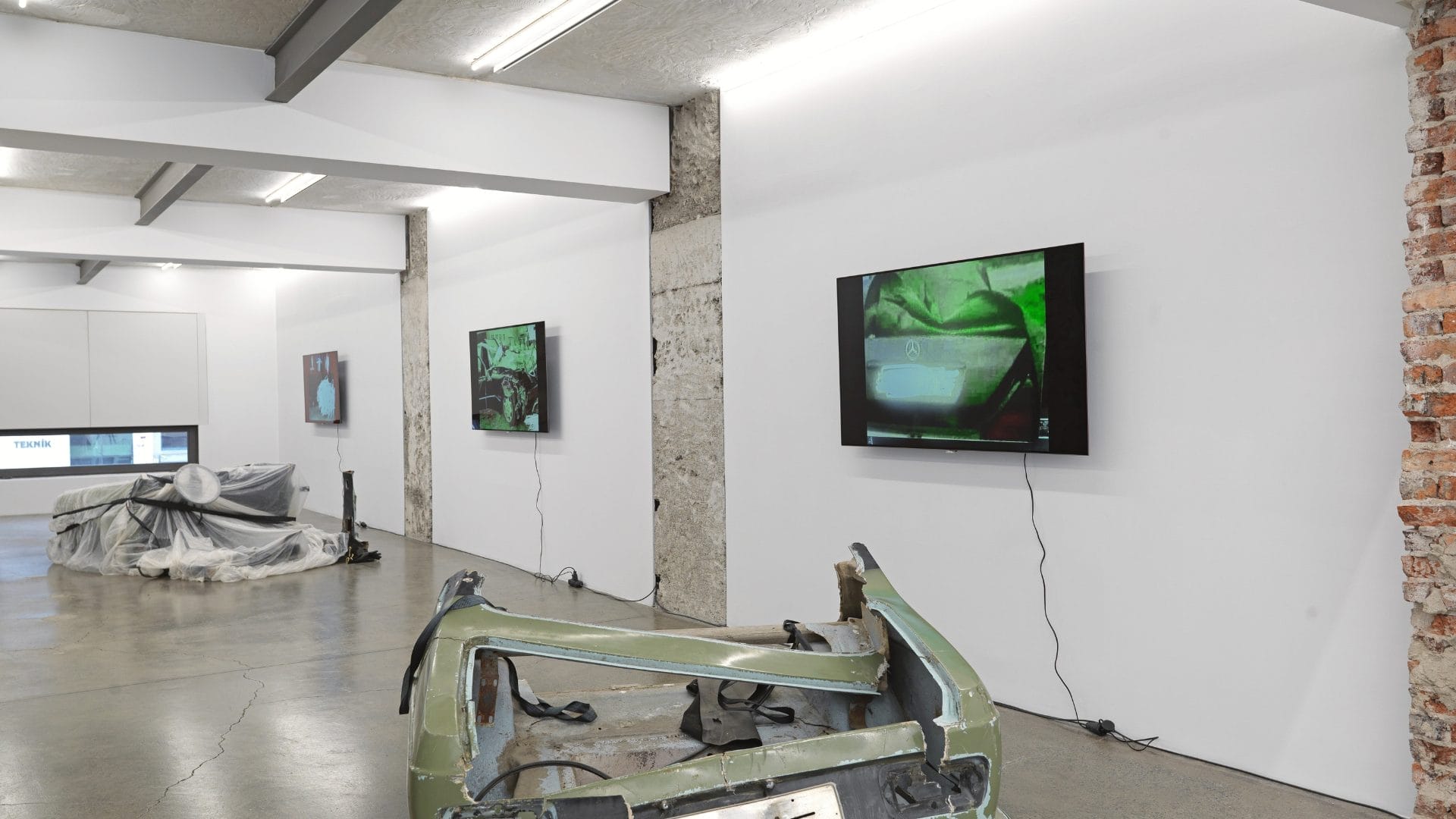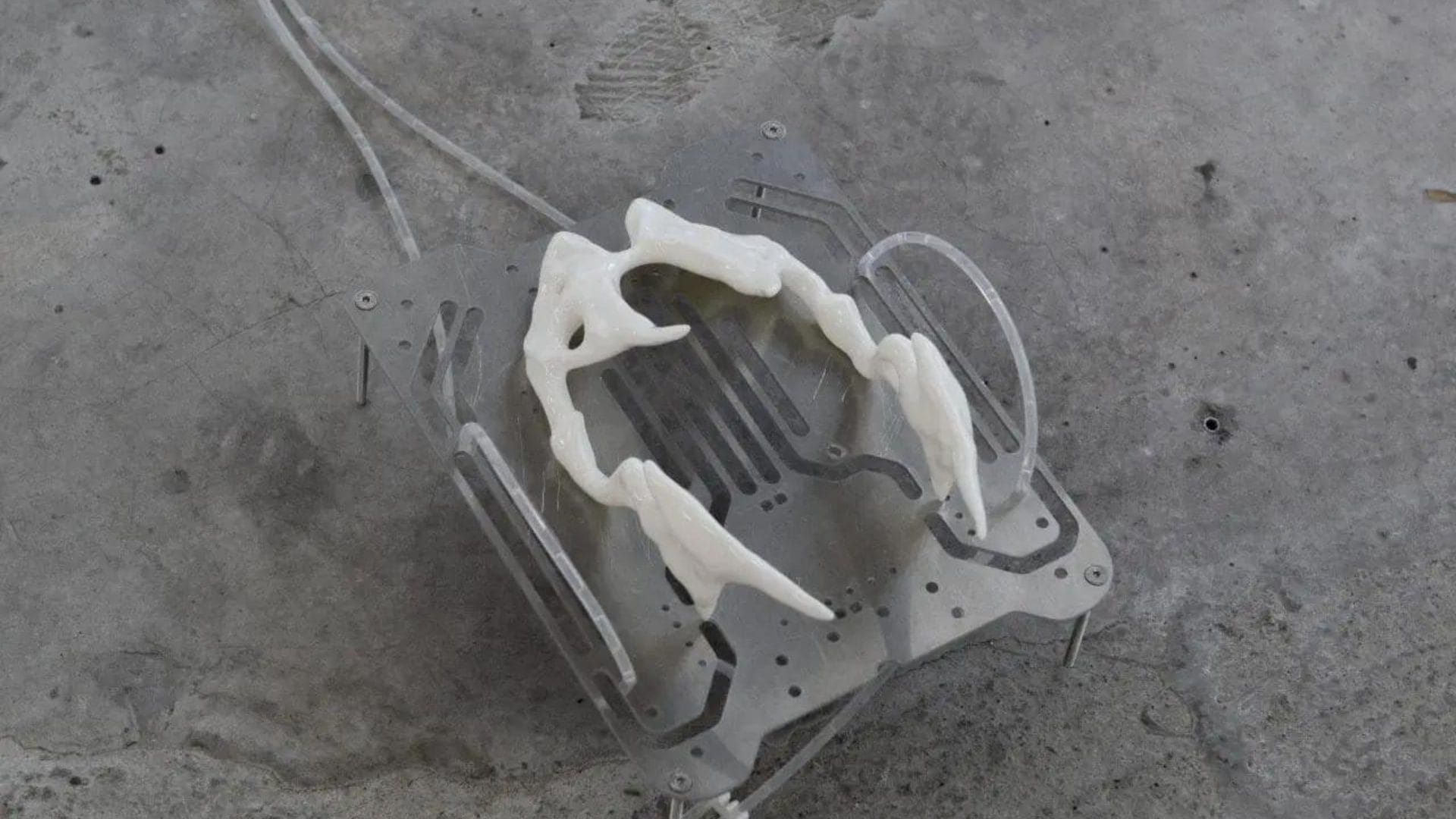
Armando Andrade Tudela, Lost Labour at FORM, Amsterdam
Lost Labour grows out of the remains and omissions of my practice. Some of these works have already taken shape, shown in Spain, Italy, and Peru. Others were left hanging, ideas noted down, sketches half-formed, projects that, for material, economic, or contextual reasons, never managed to cross into reality. For instance, Incomplete extension of debris first appeared to me, more than a decade ago, during a strange, phantasmagorical visit to the refectory of the Convent of the Descalzos in Lima.
Several works in this project were created specifically through artificial engineering. They emerged from a dialogue between FORM and myself, which gave me the chance to revisit some ideas I had been exploring recently, but with the freedom of knowing these works were never meant to become “real.” In other words, they are not destined to inhabit the physical world, nor to be manufactured, stored, or preserved. Scheme with six jokes, a work consisting of a series of semi-open door frames, glass and hinges, is an example of this.
The decision to use images of an abandoned factory as the setting for Lost Labor was suggested by Format, and it further expanded the concept of including different categories of material “existence” within the works: a kind of archive of pieces that slip through the cracks of reality, possible, yet unnatural.
The choice of the factory as the “exterior” setting and the orange environment as its “interior” counterpart should be interpreted as two interconnected layers of the same narrative. The factory functions as a framework of obsolescence, a fuselage devoid of productive functionality, while the orange interior embodies the revitalisation of works and ideas that never materialised or did so intermittently over time. Rather than two separate projects, they form a dialogue: the external shell and the internal residues, both pointing to the condition of artistic work, labour caught between projection and disappearance.
This brings to mind a short story hidden in Ricardo Palma’s Tradiciones Peruanas: On How a Sculpture Killed the Sculptor. It tells of the death of Baltazar Gavilán, an 18th-century sculptor of lugubrious works, who dies in terror after confronting his final creation. Drunk and disoriented, he finds himself in the darkness of his studio, face to face with The Archer of Death, a life-sized wooden figure with gothic overtones, an image we now see suspended from the walls of the factory tainted in red.
The story of Gavilán embodies both the darkest and most violent legacy of the colonial project but also the figure of the artist undone by his own work, pathetic, absurd, and lost in the confusion of his own labor.
















fakewhale
Founded in 2021, Fakewhale advocates the digital art market's evolution. Viewing NFT technology as a container for art, and leveraging the expansive scope of digital culture, Fakewhale strives to shape a new ecosystem in which art and technology become the starting point, rather than the final destination.
You may also like
Tanja Widmann & Johannes Porsch: Cell Project Space, London
“-1, plus One” – Beneath and Beyond the Sign of Authorship Not every door opens to let you in.
Göksu Kunak, Bygone Innocence at Pilevneli Gallery, Istanbul
“Bygone Innocence” by Göksu Kunak, curated by Léon Kruijswijk, at Pilevneli Gallery, I
Fakewhale in Conversation with Johannes Thiel
Introducing Johannes Thiel Born In 1999, Germany Visit Artist Website Johannes Thiel navigates throu




